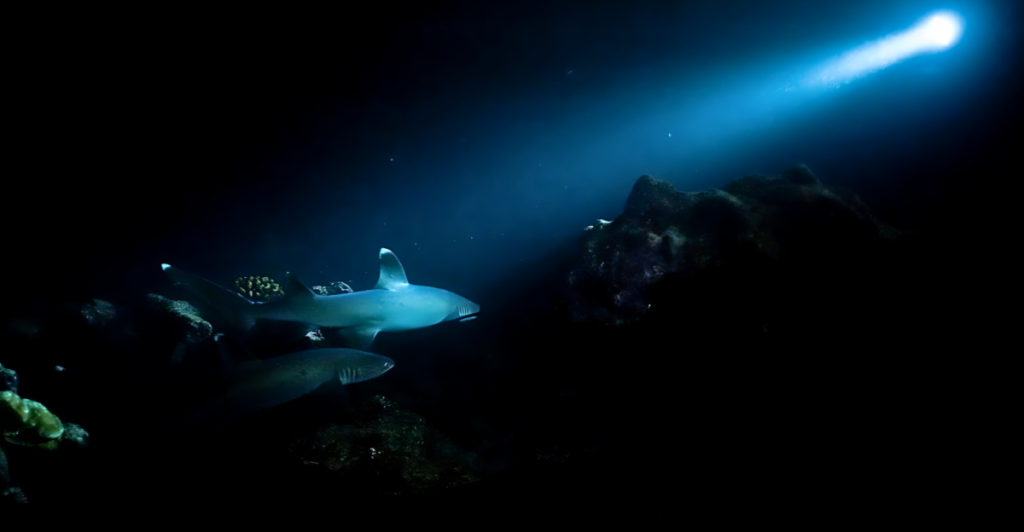
The deep sea is a world of extreme pressure, freezing temperatures, and absolute darkness—yet life thrives in these seemingly inhospitable conditions. In this alien realm, creatures have evolved bizarre and fascinating adaptations to survive, from bioluminescent lures and transparent bodies to jaws that can grab prey much larger than themselves. Whether it’s the eerie anglerfish, the barreleye fish with its see-through head, or the Mariana snailfish, which endures crushing depths, these animals showcase the resilience of life in the darkest depths of our planet.
1. Anglerfish
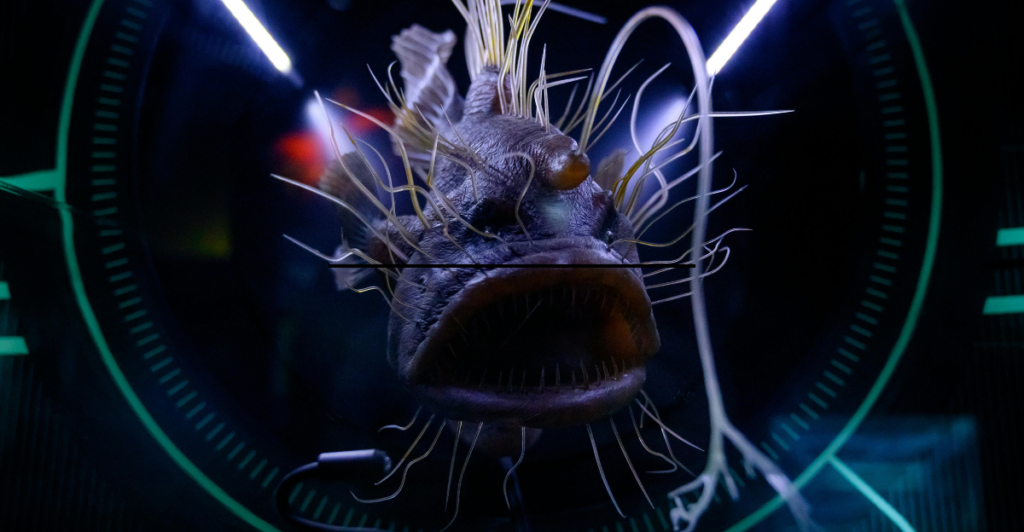
The anglerfish is a master of adaptation in the deep sea. Its most distinctive feature is a bioluminescent lure that extends from its head, used to attract prey in the pitch-black waters. This predator can open its jaw to swallow prey larger than itself, a crucial ability in an environment where food is scarce.
2. Giant Isopod
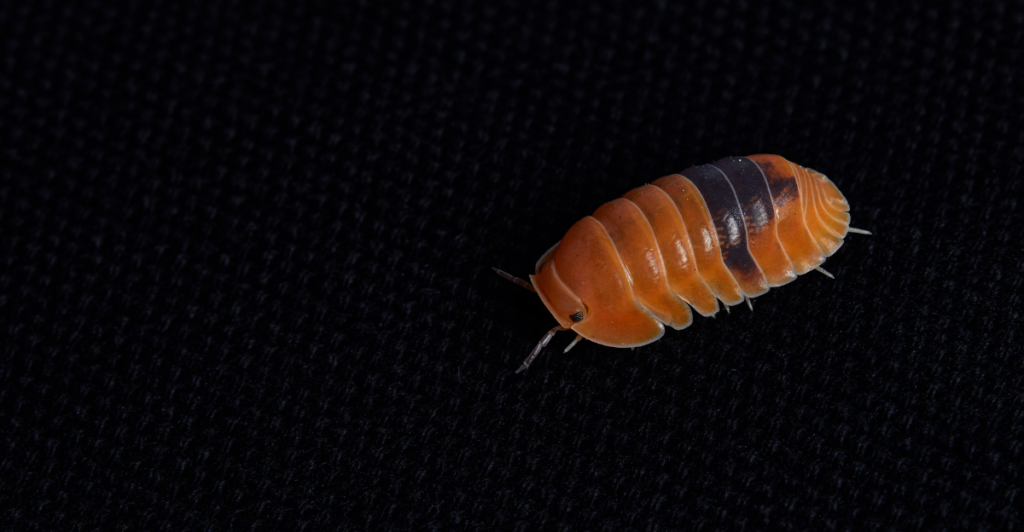
These enormous crustaceans, resembling oversized pillbugs, have adapted to the crushing pressures and darkness of the deep sea. As opportunistic scavengers, giant isopods feed on dead and decaying matter that sinks to the seafloor, such as whale carcasses and fish remains. This feeding strategy enables them to survive the scarce food availability in the deep sea.
3. Vampire Squid
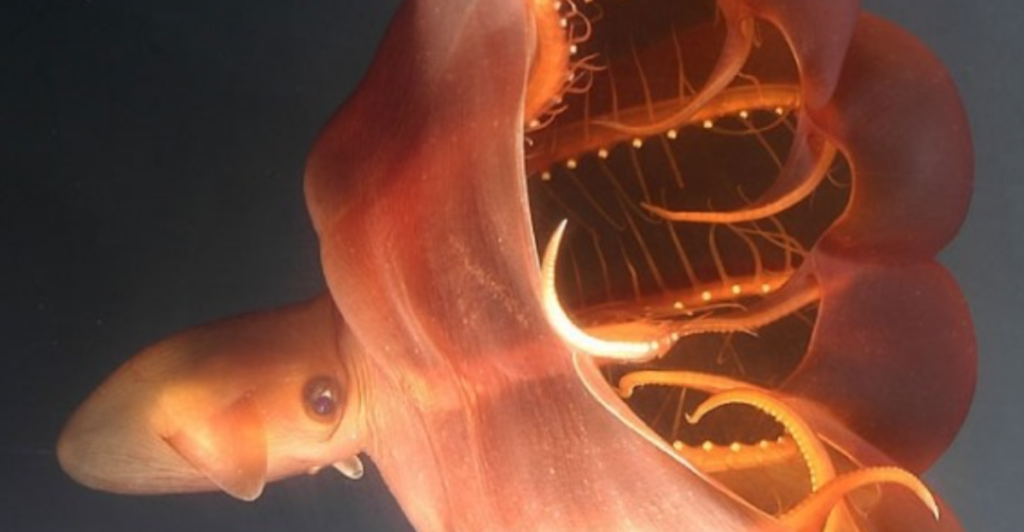
Despite its fearsome name, the vampire squid is a gentle creature. It thrives in the oxygen minimum zones of the deep sea, feeding on marine snow—organic particles drifting down from upper ocean layers. Its unique adaptations include bioluminescent arm tips and the ability to turn itself inside out as a defense mechanism.
4. Viperfish
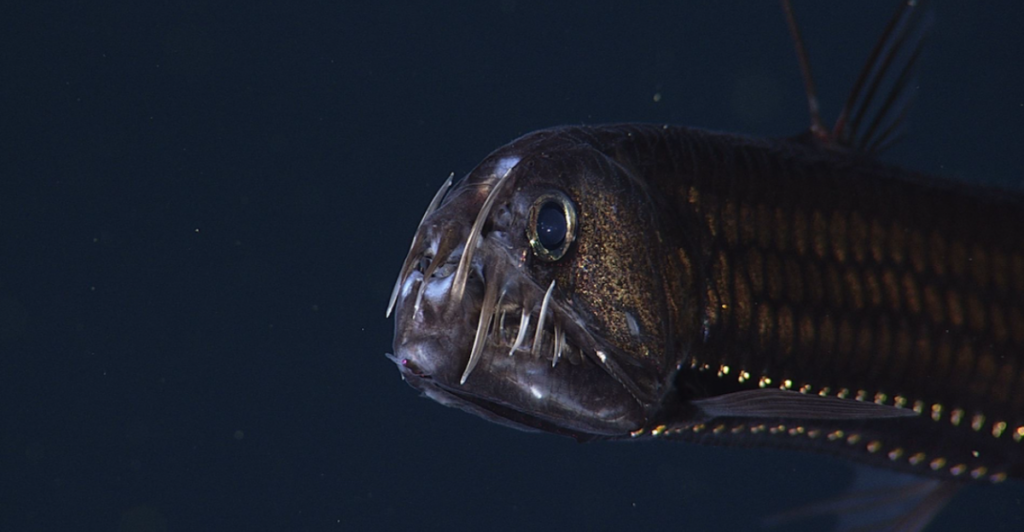
Sloane’s viperfish is found at depths ranging from 1,500 to 8,000 feet. It has evolved remarkable features to survive in darkness, including photophores (light-producing organs) along its belly that help mask its silhouette from predators below. Its fangs are so long that if they were misaligned, they would pierce through its brain.
5. Dumbo Octopus
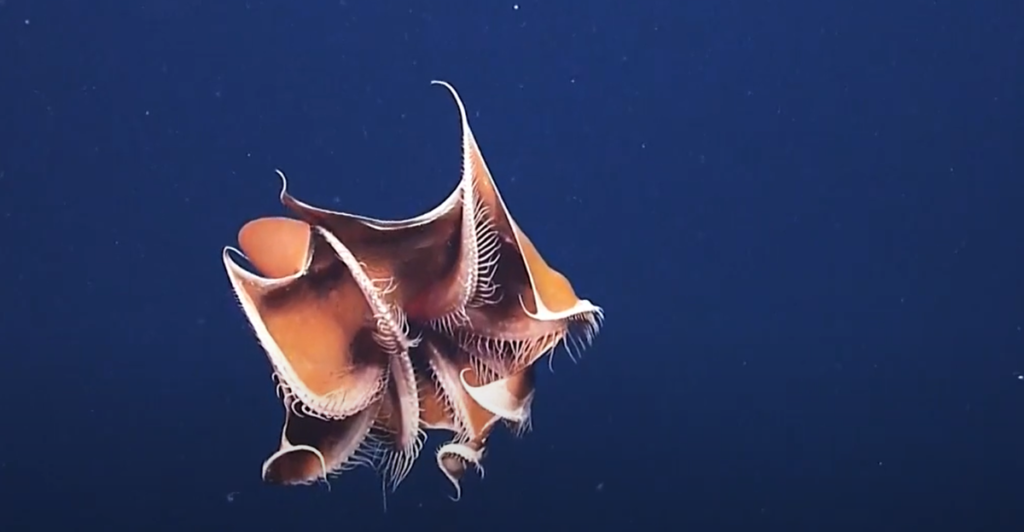
Named for its ear-like fins resembling Dumbo the elephant’s ears, this deep-sea octopus lives at depths of 9,800 to 13,000 feet. Their gelatinous bodies are adapted to withstand the extreme pressures of the deep sea, allowing them to thrive in such harsh environments. They use their ear-like fins to gracefully navigate the deep-sea waters, flapping them to propel themselves and utilizing their arms for steering.
6. Barreleye Fish
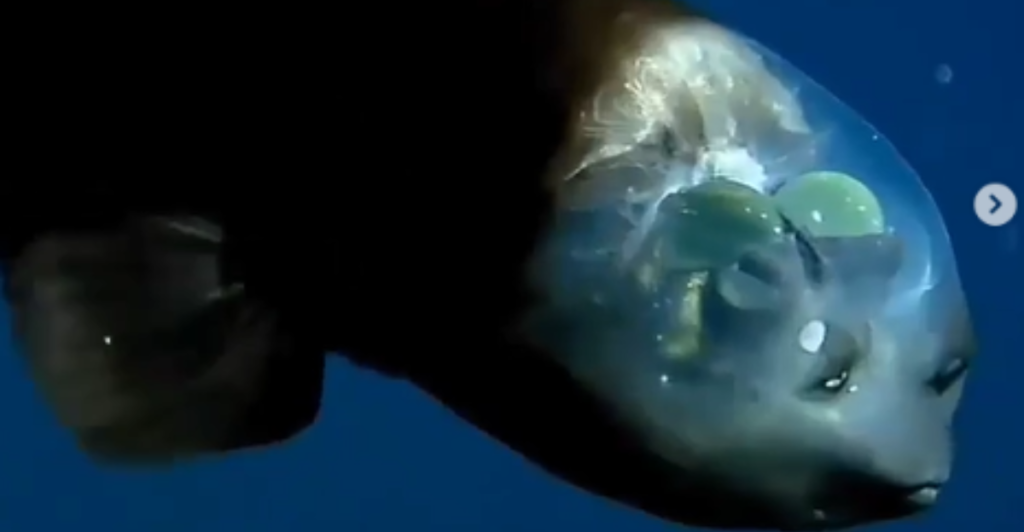
The barreleye fish possesses a transparent, fluid-filled dome on its head, through which its tubular eyes are visible. These eyes are extremely light-sensitive and can rotate within the transparent shield, allowing the fish to look upward to detect prey and forward when feeding.
7. Yeti Crab
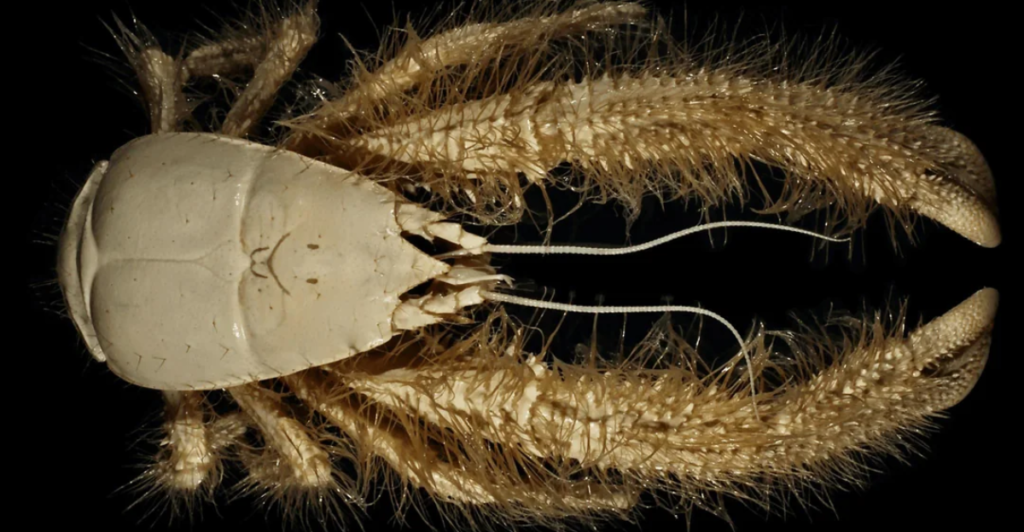
Discovered in 2005, yeti crabs live in one of the most extreme environments on Earth: deep-sea hydrothermal vents. These crabs have adapted to harvest bacteria on their hairy pincers for food. Yeti crabs must carefully position themselves around hydrothermal vents to maintain a survivable temperature. Venture too close, and they risk exposure to superheated water; stray too far, and they encounter the near-freezing temperatures of the deep sea.
8. Deep-Sea Dragonfish
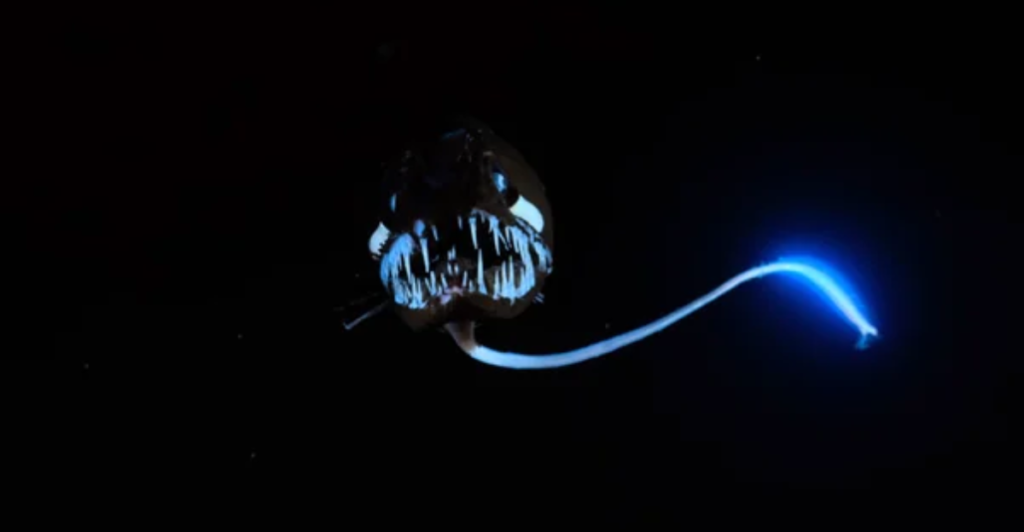
The deep-sea dragonfish is a fierce predator that thrives in the darkness of the deep ocean. It is equipped with bioluminescent photophores along its body, which it uses for both camouflage and communication. Its most remarkable feature is a bioluminescent barbel that dangles in front of its mouth, luring unsuspecting prey toward its sharp, needle-like teeth.
9. Fangtooth Fish
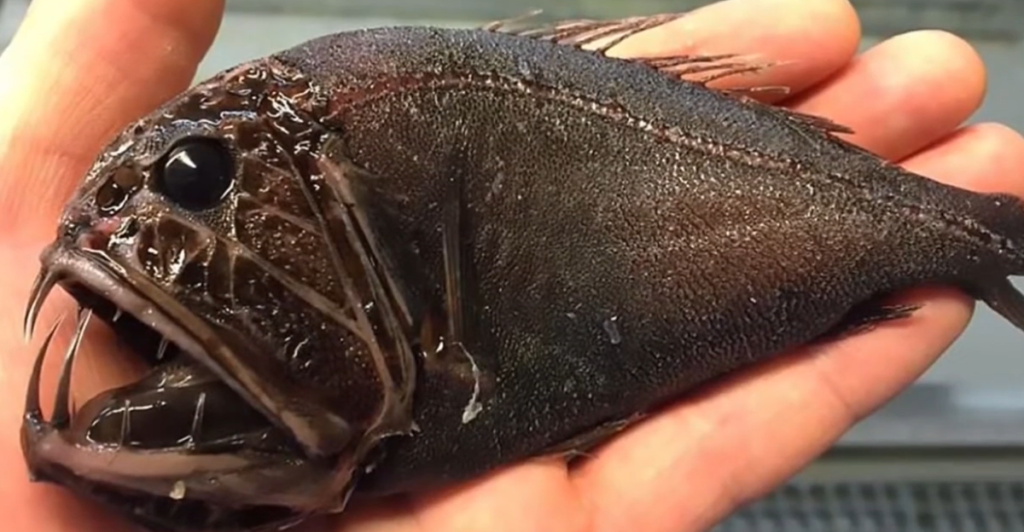
With the largest teeth proportional to body size of any fish, the fangtooth is a formidable predator in the deep sea. Its formidable teeth are so long that the fish has evolved opposing sockets on either side of its brain to accommodate them when the mouth is closed. Its eyes have adapted to detect the faintest bioluminescent flashes in the darkness.
10. Glass Squid
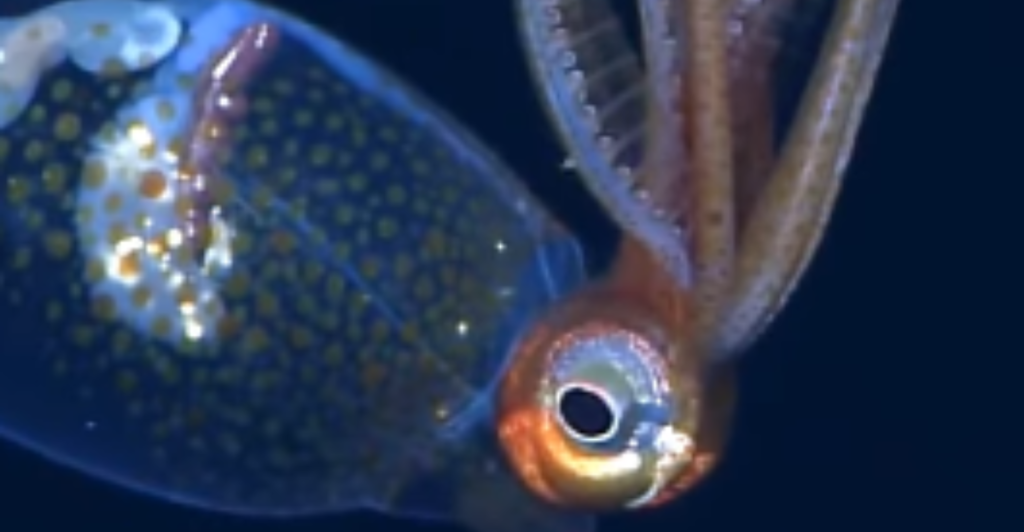
The glass squid, particularly in its juvenile form, has evolved remarkable adaptations for life in the twilight zone. Its transparent body helps it avoid casting shadows that predators might detect. The squid’s eyes are on long stalks, each equipped with a bioluminescent organ to mask its shadow. As adults, these squids move to even deeper, darker waters.
11. Mariana Snailfish
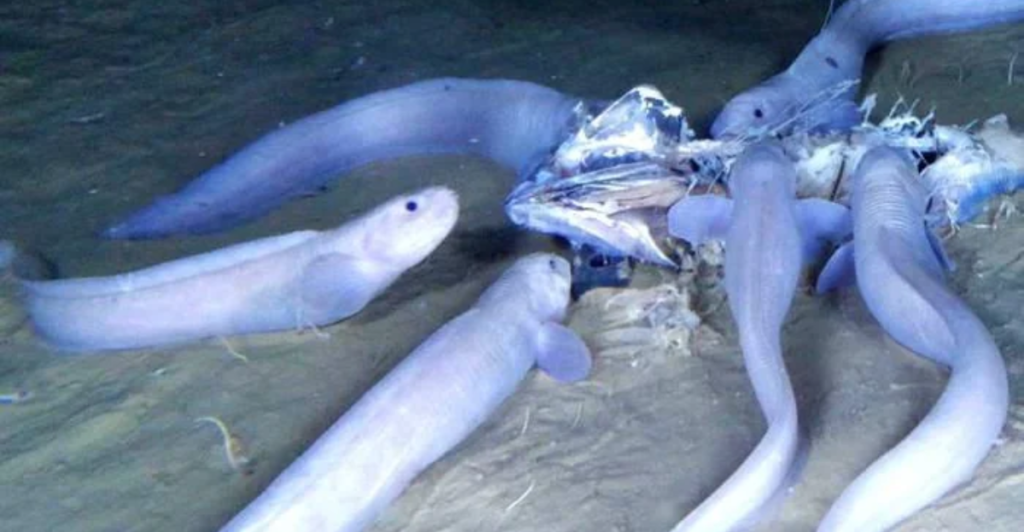
The Mariana snailfish defies the odds by surviving in one of Earth’s most extreme environments – the Mariana Trench. It has been spotted at depths of 26,200 feet, where it faces crushing pressures and complete darkness. Despite its delicate appearance, this snailfish is a top predator in its habitat, primarily feeding on tiny crustaceans such as amphipods.
12. Threadfin Snailfish
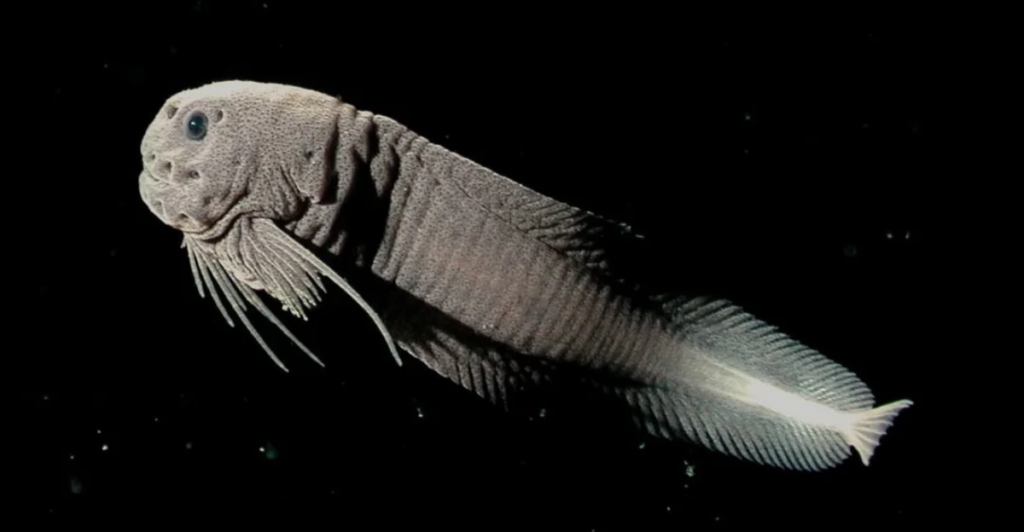
The Threadfin Snailfish, discovered at a depth of 7,759 feet, is a remarkable deep-sea survivor. Adapted to the extreme cold and crushing pressures of the Arctic deep, this elusive fish is distinguished by its delicate, whisker-like barbels, which serve as sensory organs to detect movement and vibrations in pitch-black waters. These barbels help the snailfish navigate its dark environment and locate prey in the nutrient-rich waters surrounding hydrothermal vents.
Discover more of our trending stories and follow us to keep them appearing in your feed

The War on Cows Is Over—And Green Extremists Have Lost
There Will Be Eruptions”: Concerns Mount as Yellowstone Supervolcano Activity Shifts
After 800 Years of Silence, This American Volcano Shows Signs of Activity
Climate Change Overestimated? New Data Shows Oceans Are Cooling The Planet Faster Than Predicted
This article first appeared here
Stay connected with us for more stories like this! Follow us to get the latest updates or hit the Follow button at the top of this article, and let us know what you think by leaving your feedback below. We’d love to hear from you!







